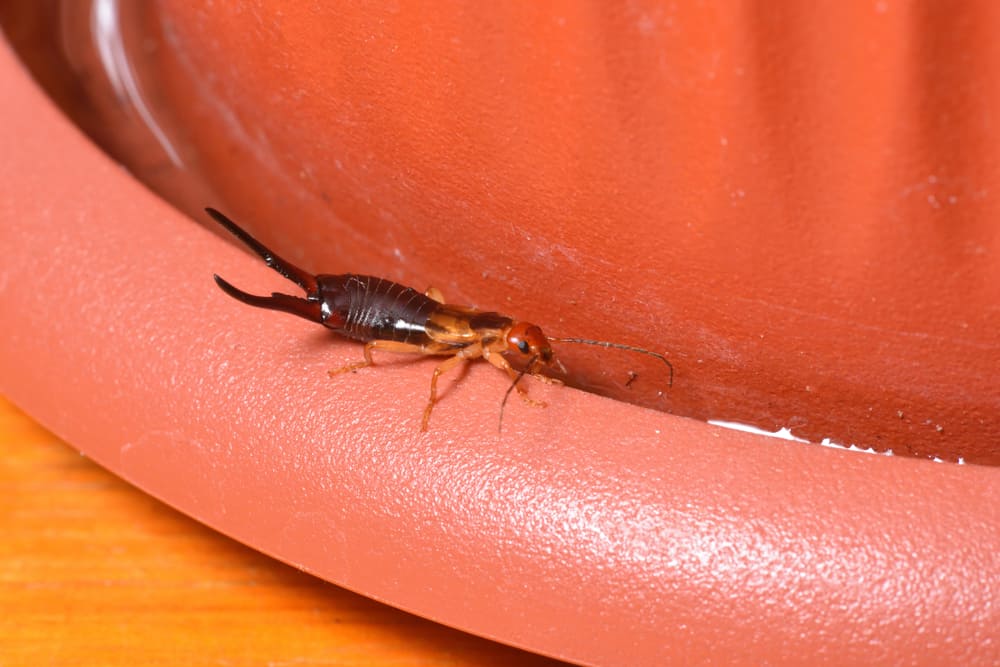The earwig is a bug that remains part of many kids’ childhood memories. Often found on wooden playground equipment, these insects are mostly known for their pincers and for being spooky looking despite their diminutive size.
You might be wondering what these pests are doing in your house and why they won’t leave. Thankfully, you have a good guide to teach you the basics about controlling the population of these insects.
Do You Have Earwigs?
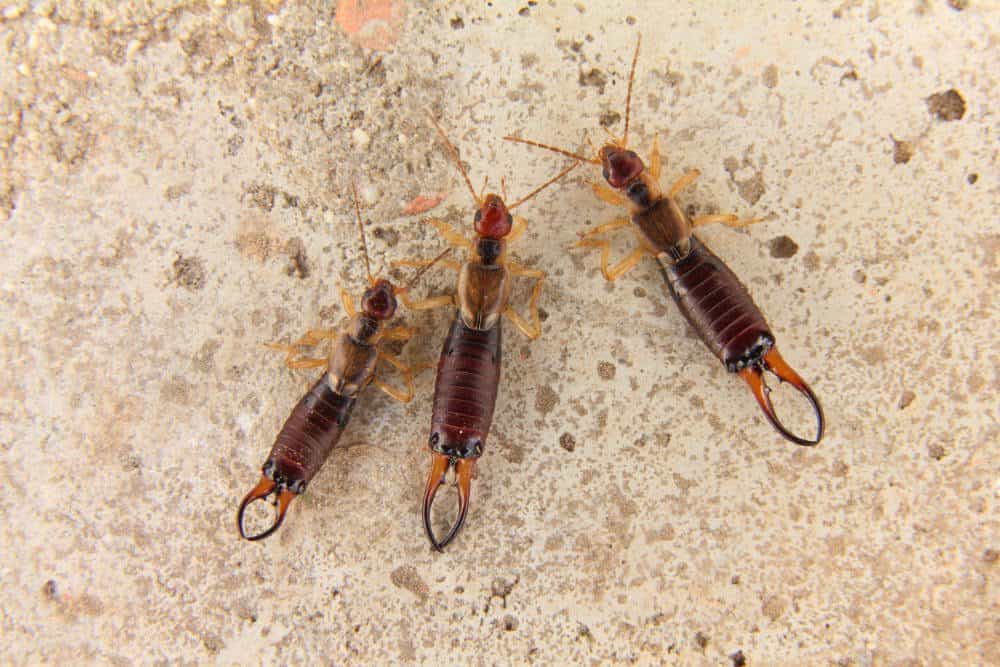
Credit: colonialpest
It’s important to note that there are different types of earwigs. This is actually a nickname given to an entire genus of insects with six legs, pincers on the end of their behinds, and their smallish size.
Some earwigs have wings, while others don’t. It depends on the specific species. If you are not sure whether you have earwigs, check for the pincers on their behinds. They are often mistaken for silverfish, which are far longer and can cause more damage.
Are earwigs dangerous?
No, not really. Contrary to what you may have heard of as a kid, they don’t crawl in ears and lay eggs there. They just look terrible. They are not venomous, so it’s not like you have to worry about them poisoning you with a bite.
With that said, they are not pleasant and certain species can give you a rather annoying pinch. Most people (rightfully) don’t want earwigs in their home.
Can earwigs cause damage to my food?
It depends on the species. Many earwigs are fond of eating leaves and other vegetation, so if you store your food outside on a counter, it could end up being their next meal. However, most earwigs actually eat other pests as part of their diet.
As far as sanitation and other issues go, this is not that bad of an infestation. It could be far worse, such as a cockroach infestation. That can actually cause serious disease to you, because roaches often track in dangerous illnesses.
How Can I Tell If I Have an Earwig Infestation?
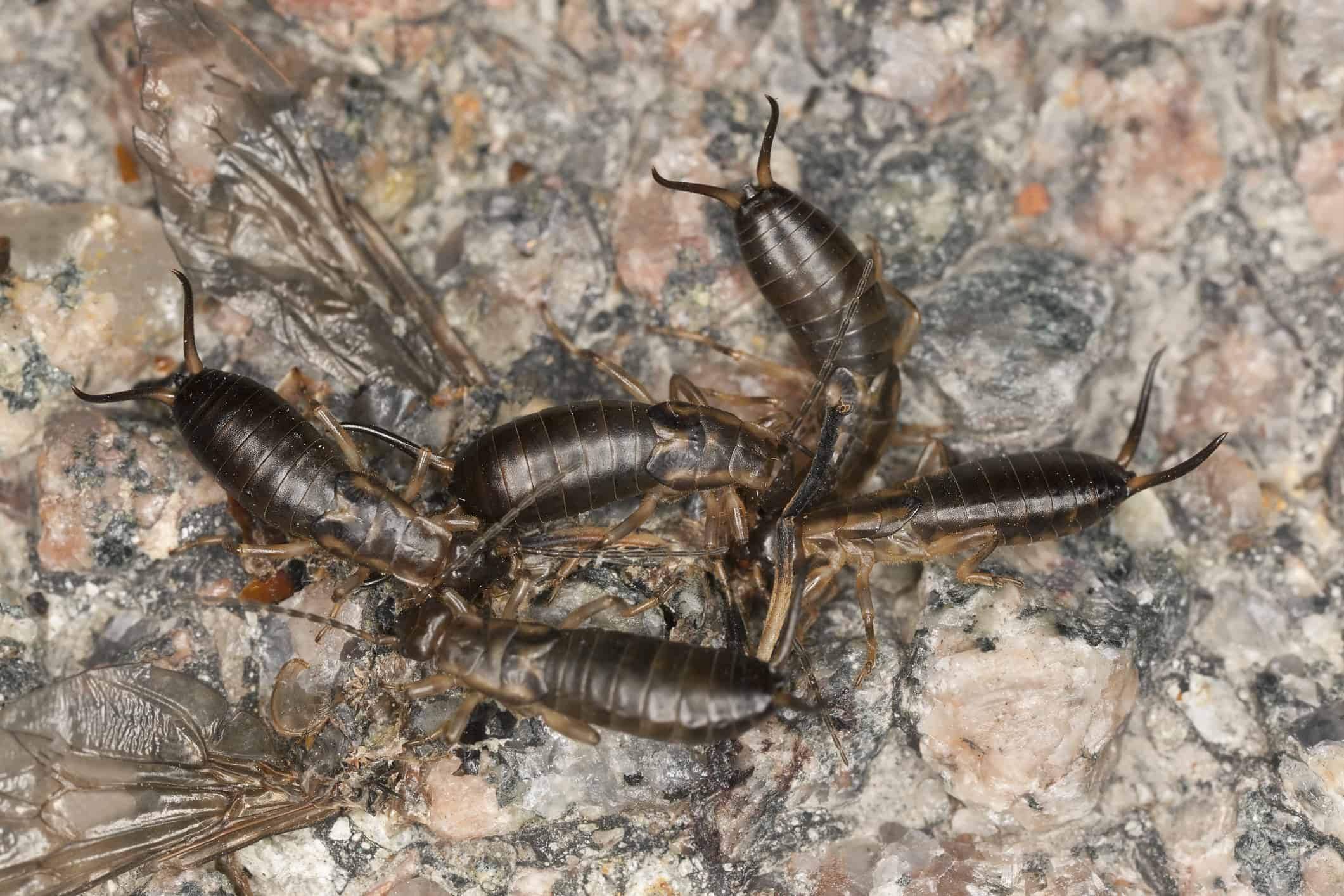
Credit: valleypestsolutions
Contrary to popular belief, there are moments when you may see a lone earwig in your house. They do occasionally wander in. However, if these signs ring true for you, it is very likely that you have an infestation:
- A foul smell that you get a whiff of in moist places. It’s almost a sweet-sour smell. If you have ever smelled a rotten log, you may have a good idea of what to expect. If something smells gross, it may be an earwig infestation.
- When you shine a bright light on the floor at night, you see them scurry towards the light. Earwigs are primarily nocturnal, but they are attracted to bright lights during the night. This is an easy way to discover if they have made a home in your house.
- You’ve found them in your magazines or books. This is usually a warning sign that your infestation may have gotten a little out of hand. Most of the time, it doesn’t get to the point where your reading materials have been compromised.
- You see them crawling around at night. Since they are nocturnal, you’re highly unlikely to find them during the day.
- You’ve found a few dead earwigs in your cabinets, bathroom, or basement. Generally speaking, if you keep finding dead bugs of a certain species in your home, you have an infestation.
- Your fresh-cut flowers don’t look too hot, and neither do your potted plants. You’ll notice that the petals of your plants will have little marks from where earwigs have eaten. Plants are an earwig’s favorite meal, so if you see bite marks on them, you have a problem.
How Did Earwigs Get into My Home?
This is actually pretty simple. They usually get into a house by crawling through the cracks in doors, gaps in windows, and holes in walls. It’s not even that unusual to hear of earwigs getting in through a laundry room dryer vent.
Along with crawling in crevices, they can also get in by hitching a ride in boxes with old newspaper, or even in a bag of mulch. Regardless of why, you should get rid of them.
Why Are There Earwigs in My House?
That’s the million-dollar question, isn’t it? Well, the good news is that earwigs are fairly easy to understand when it comes to their behavior. Here are the main reasons they may have made a home inside your house.
1. They found food
If you have a lot of plants inside your home or leave vegetables on the counter, this could be enough to bring earwigs in your home. Earwigs love to eat vegetation. Combine that with a house that offers shelter from the elements and you got earwig heaven.
It’s also important to note that earwigs may also eat other insects that are bothering you. If you have a small fly infestation, they could be there for that reason alone.
2. They found moisture
Earwigs love moisture, both indoors and outdoors. In their natural habitat, they typically find their hiding place in wet piles of leaves or rotting wood piles. They love moldy, musty debris outside. So, don’t be shocked if they crave that inside.
If your home has a high level of moisture, earwigs are going to make a point of moving right on in. It reminds them of the dirt near their original home.
3. They want shelter from difficult weather
In this sense, earwigs really aren’t that different from people. Most earwigs don’t want to be stuck in the snow or in scorching heat. They don’t want to be in an area that’s flooding, either. So, that’s usually when they will try to get inside a house.
How Do You Get Rid of Earwigs in Your Home?
This is going to be a multi-step approach. Let’s look at the best way to do it if you cannot afford a professional pest control company to do it for you.
1. Start by cleaning up your home
In order to get rid of earwigs, you need to start vacuuming up crevices and other corners where they could congregate. It’s also a way to ensure that eggs don’t stay in your area.
Now would also be a good time to clean up any debris in or near your home, such as the leaves near your gutters or wood piles near your basement window.
2. Dehumidify your home
Earwigs do not like dry areas, so you might as well make it inhospitable to them. Get a dehumidifier for your basement or bathrooms, if that’s where they are currently hanging out. It will go a long way.
3. Create an earwig trap (or two) to lay out near areas you’ve caught them before
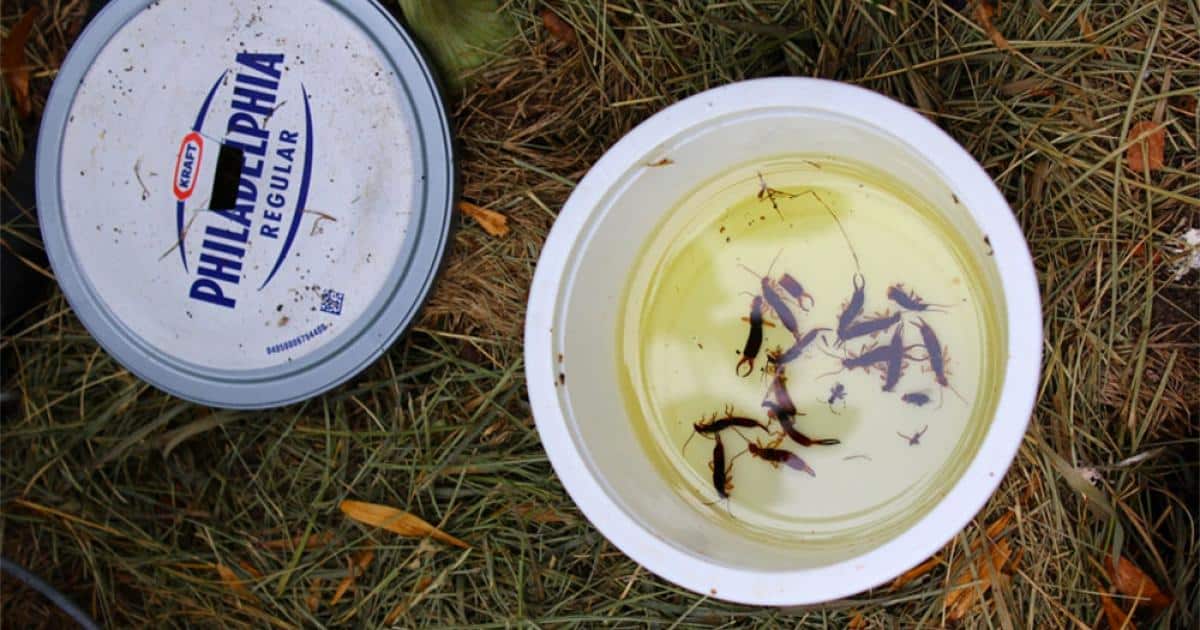
Credit: almanac
These are pretty easy to create, if you don’t want to buy them at the hardware store.
- You can put a terracotta pot filled with oil and a straw to create an oil trap.
- Use a magazine to lure them into hiding. Then, when you wake up, shake the crawlies into a bucket of soapy water. The bucket of soapy water will kill them.
- Use a shot glass with olive oil and soy sauce to kill them. Earwigs love soy sauce’s smell, and will run to the glass. The oil will trap them in and drown them.
If you see earwigs out in the open, use a spray bottle with rubbing alcohol and water to kill them. The alcohol acts as an instant killer.
4. If you have an earwig infestation in your garden, powder up
Sprinkle boric acid powder or diatomaceous earth in your garden to get rid of them. You can also use this in your basement or behind cabinets. However, you need to exercise caution in using this around pets and small children. It can irritate their lungs!
When should you call an exterminator?
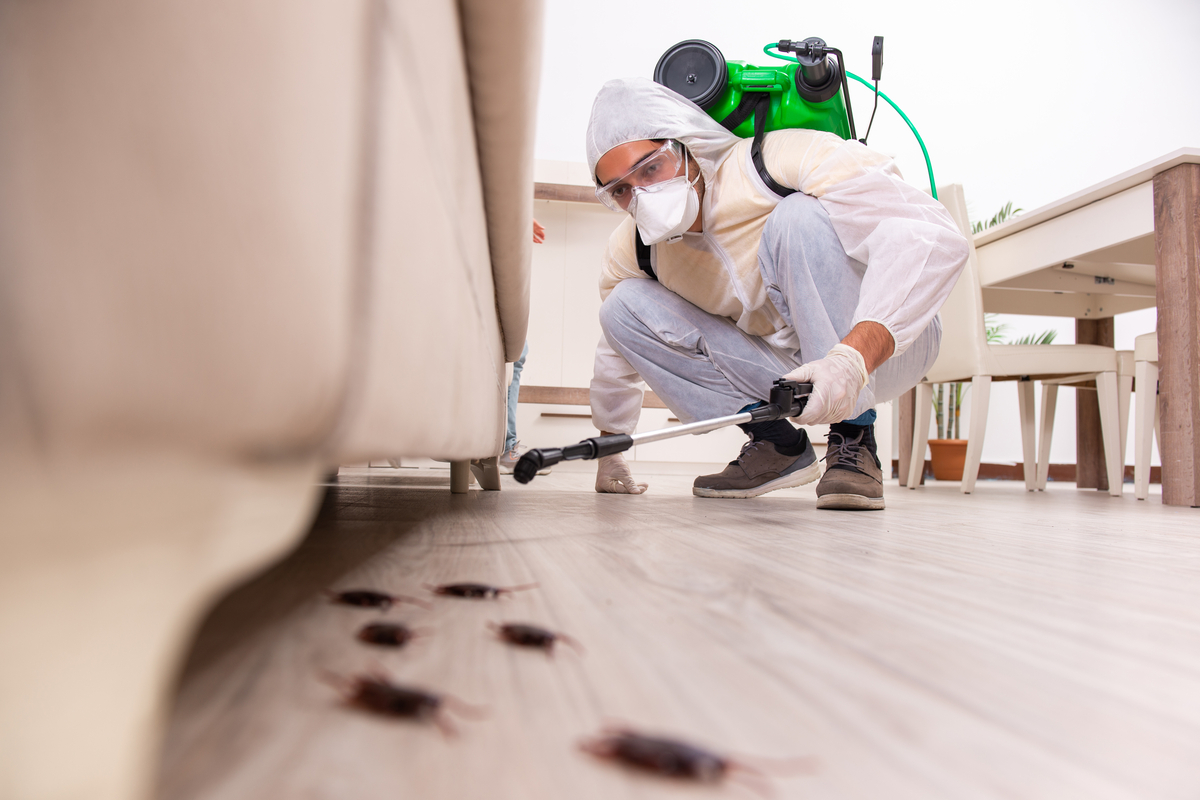
Credit: 21oak
In most cases, earwig infestations are a pretty quick-ending issue. If you cannot get rid of the earwig infestation on your own, call an exterminator. It usually does not actually come to this, though.
Should You Exterminate Earwigs Outside of Your House?
This all depends on the quantity of earwigs you’re seeing. Earwigs play a vital role in the ecosystem and are instrumental in helping replenish soil nutrients. In a weird way, having a small amount of them in your yard can help you get lusher lawns and healthier gardens.
However, too many earwigs can destroy plants and turn into a nuisance. You can usually get rid of them by removing wet debris from your yard.
In Conclusion…
Earwigs are an annoying pest, but they’re not the worst infestation to have. If you found them in your home, it’s likely due to the high moisture levels you have in your house, or because you have the food they want to eat.
Setting up traps, dehydrating your home, and keeping plants stored away will usually be enough to get them to go away. With a little patience and knowledge, you won’t have to deal with them again.
